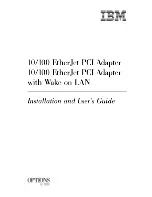
necessary keeping it free from fiber. In any case, unless you have already carded the fiber sev-
eral times, the stuff on the licker
-
in will be real junk, dirt, second cuts, and other uglies. Don't
be frugal. Pitch it.
Cleaning a drum carder
This job is even more bothersome than cleaning hand carders, because it takes longer and is
more frustrating. Of course, you can leave bits of fluff embedded in the teeth, especially if you
always process fibers of similar color and texture. But I advise against this, especially if you
have been working on protein fibers
-
which attract wool moth larvae and carpet beetles.
These pests can be transferred in turn to everything you run through the machine. You might
as well clean your carder, starting with the licker
-
in, because it's hard to clean that part with-
out transferring a bunch of stuff onto the swift. Remove the junk batt from the licker
-
in as
you would a regular batt, while doing your best to keep the swift from taking it. Get most of
the trash off, but don't bother to get it all
-
you will have to clean this part again at least once.
Now clear the swift of clumps or wisps of fiber by lifting them off with the doffer. There prob-
ably will not be enough residue to form a complete layer. Keep pulling the fibers out of the
teeth with your free hand , which is not turning the handle. Or you could use the blending
brush, supplied with the carder or available for separate purchase. Now look at the licker
-
in.
What did I tell you? Ignore it for now, until the swift is cleaner. The brush works well at this
point for combing through the teeth and lifting out stray bits of fiber. Always comb with the
grain of the teeth. Go as deeply into them as you can. Pull the bits of fiber out of the brush as
you retrieve them, so they don't get redeposited. When the swift is fairly clean, go back to the
licker
-
in; then repeat your efforts on the swift, and so forth. A drum carder is a bed that never
stays made, but eventually it will be quite clean. If you want the card clothing really clean
-
for
example, if you are changing colors
-
there is one more thing to do. Nothing is more frus-
trating than to go from black wool to white and then discover that the first batts have dark fi-
bers mixed in. To prevent this, I use my secret weapon. As a standard accessory for your drum
carder, get a strong, stiff, long
-
bristled hairbrush. It will pick up the last fibers that have resist-
ed your previous efforts: keep brushing up and lifting out, working with the grain, and watch
more fiber come away from the drum. That should do it. But if you are, indeed, switching col-
ors, check again in good light
-
it pays to be paranoid.





























